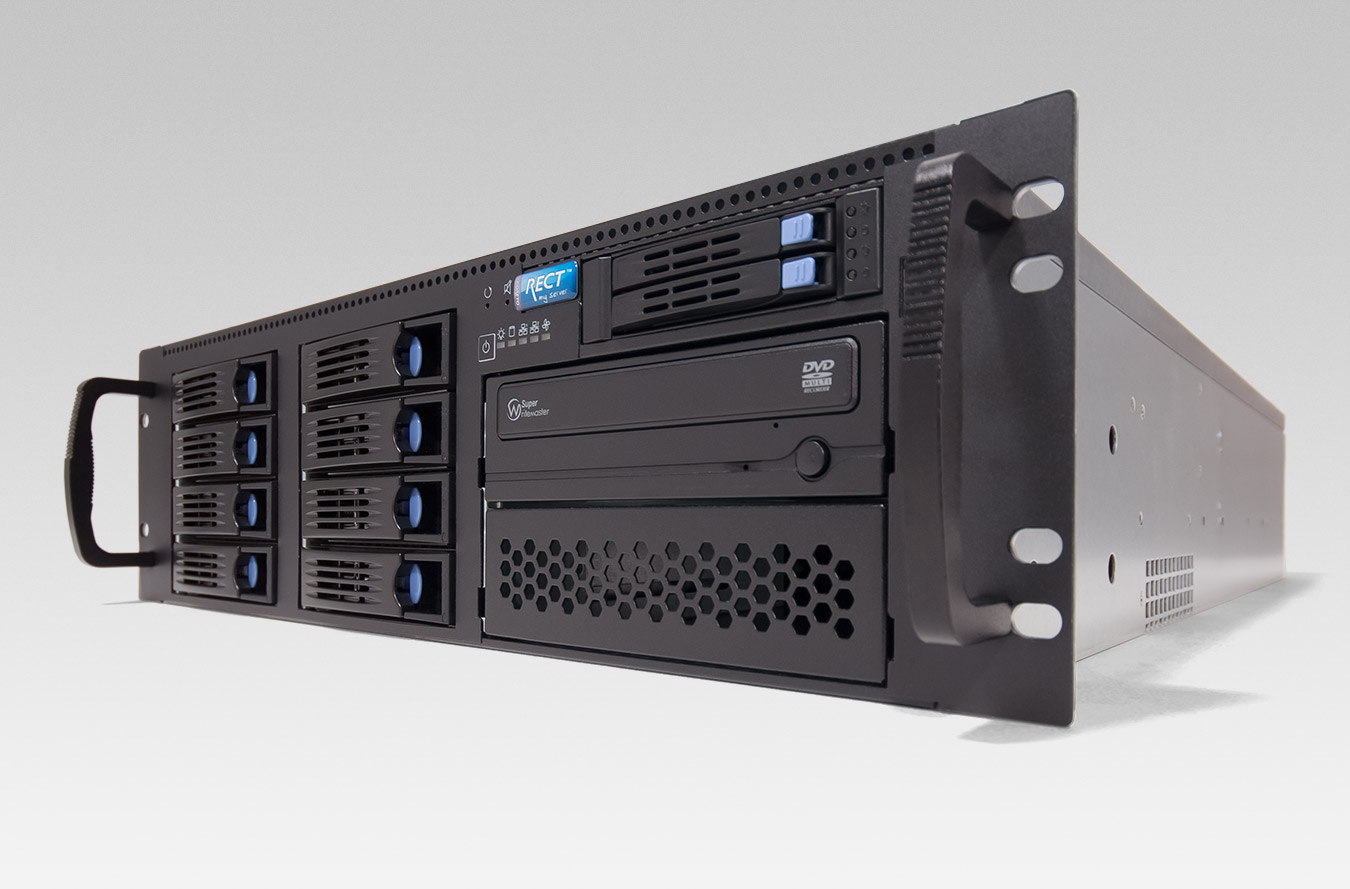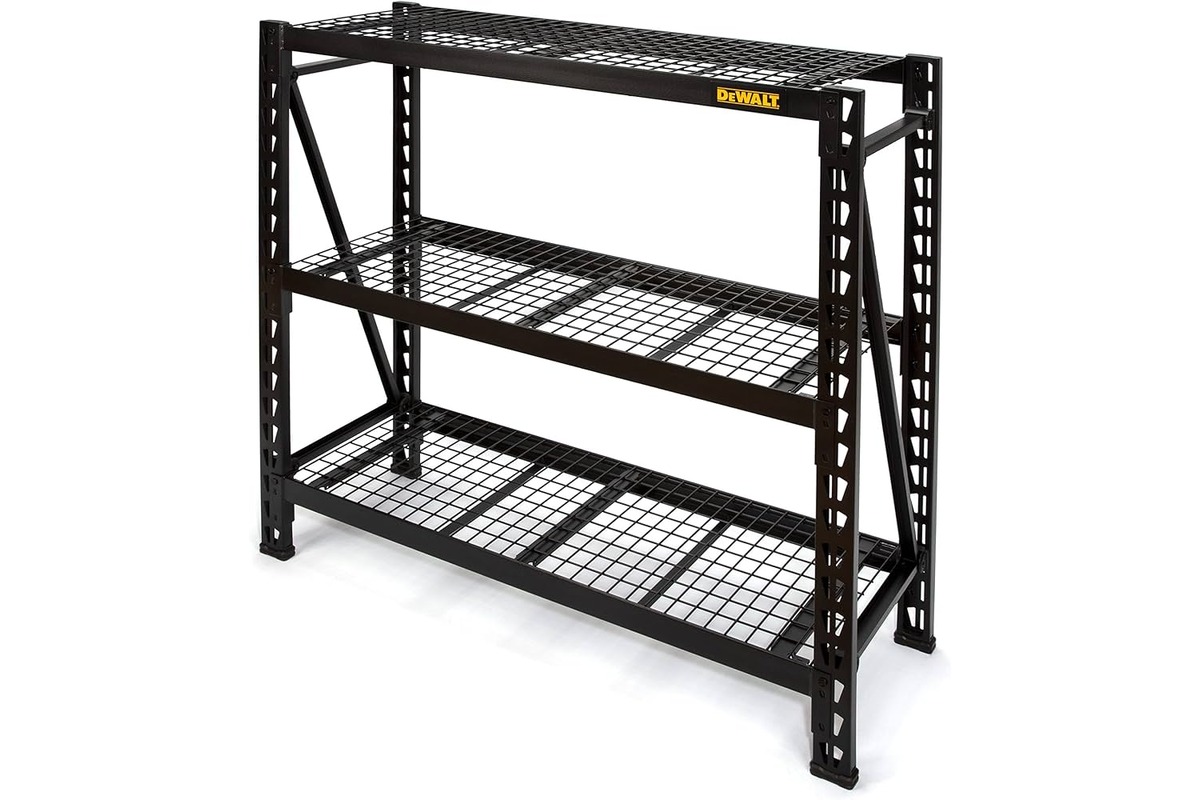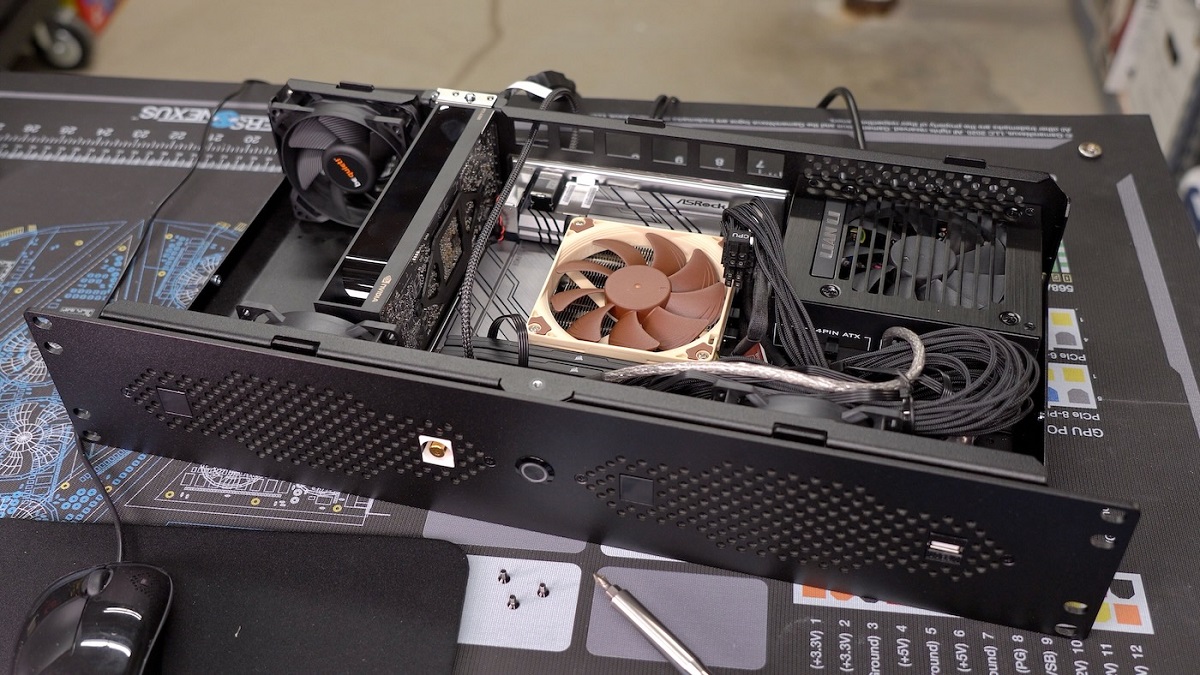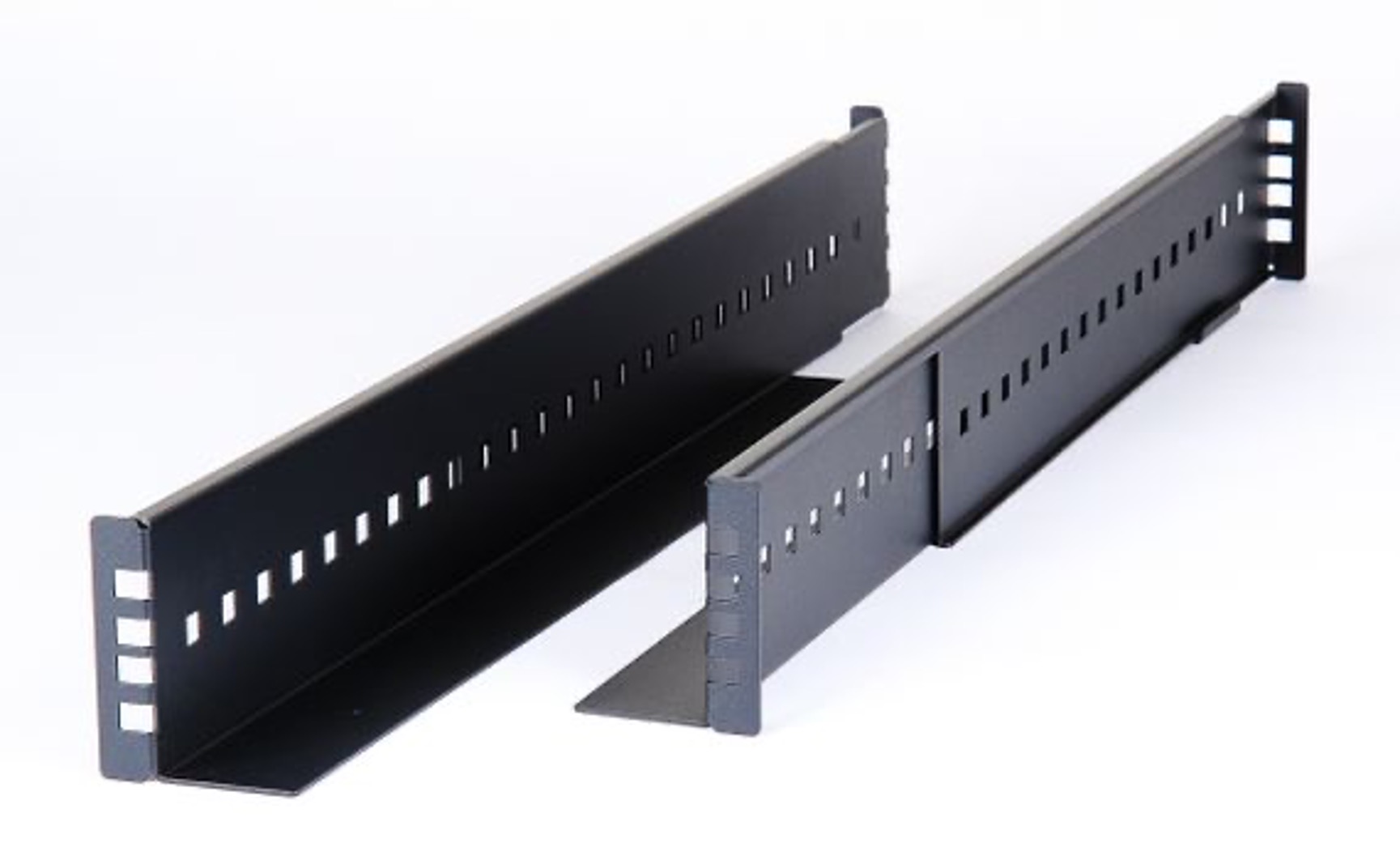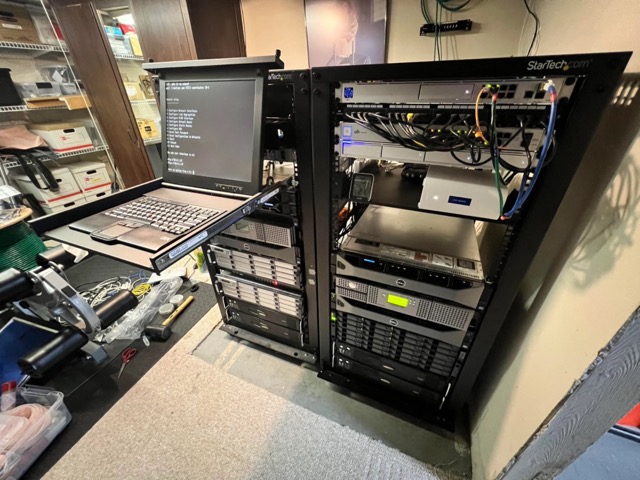Introduction
Welcome to our article on server racks! If you’ve ever worked in the IT industry or managed data centers, you’ve probably come across the term “U” when referring to server rack sizes. In this article, we’ll be focusing specifically on the height of a 3U server rack. So, what exactly does “3U” mean? Stick with us as we break it down for you.
A server rack is a specialized cabinet used to house and organize various equipment, such as servers, network switches, and other networking hardware. These racks are designed to maximize space efficiency and facilitate proper airflow and cable management. The height of a server rack is measured in “U,” where 1U is equal to 1.75 inches (or approximately 4.44 centimeters).
Now, you might be wondering why the term “U” is used instead of inches or centimeters. Well, the use of “U” is more standardized in the IT industry, allowing for easy comparison and compatibility across different server rack manufacturers and models. Understanding the concept of “U” is crucial when selecting the right server rack for your needs.
So, let’s dive into the specifics of a 3U server rack. We will explore its standard height, calculate its dimensions in inches and centimeters, discuss common uses, and consider important factors to keep in mind when choosing a 3U server rack. By the end of this article, you’ll have a comprehensive understanding of what a 3U server rack entails and whether it fits your requirements.
Understanding U in Server Racks
Before we dive into the details of a 3U server rack, let’s take a moment to understand what “U” represents in the context of server racks. As mentioned earlier, “U” stands for “unit” and is a standard unit of measurement used in the IT industry to denote the vertical height of a server rack.
Each “U” represents 1.75 inches (or approximately 4.44 centimeters) of vertical space within the server rack. This measurement is based on the height of a traditional 19-inch rack, which has become the industry standard.
As server and networking equipment comes in various sizes, the height of a server rack is crucial for proper organization and compatibility. By designating specific heights in “U,” it becomes easier to select the appropriate rack size and ensure that the equipment fits snugly and securely within the rack.
In practical terms, server racks are available in various heights, commonly ranging from 1U to 48U or even higher. The number before “U” indicates the number of “U” spaces the rack has vertically. For example, a 2U server rack has a height of 3.5 inches (2 x 1.75 inches), while a 48U server rack reaches a towering 84 inches (48 x 1.75 inches).
It’s important to note that the height measurement of server racks includes the rack frame and any additional space required for proper ventilation and cable management. Therefore, the usable space for equipment will be slightly less than the designated “U” measurement.
Understanding the concept of “U” is vital when selecting a server rack, as it directly corresponds to the amount of space available for your equipment. It allows you to determine the number of devices you can accommodate vertically and helps ensure efficient use of valuable rack space.
Now that we have a clear understanding of what “U” represents in server racks, let’s move on to explore the specific details of a 3U server rack.
Standard Height of a 3U Server Rack
When it comes to a 3U server rack, the “3U” designation indicates that it has a height of 5.25 inches (3 x 1.75 inches). This makes it relatively compact compared to larger server rack sizes, while still providing enough space to accommodate multiple equipment units vertically.
A 3U server rack is often preferred for smaller businesses, home offices, or environments with limited space. It strikes a balance between offering sufficient capacity for equipment and being compact enough to fit into tight spaces.
It’s worth noting that the height measurement of a 3U server rack includes the rack’s frame and any additional space required for proper airflow and cable management. This means that the usable space within the rack will be slightly less than 5.25 inches.
The standard height of a 3U server rack is widely recognized in the IT industry and is compatible with most server rack accessories and equipment that are designed to fit within this height. This level of compatibility makes it easier to find suitable server rack shelves, cable management, and other accessories required for organizing and maintaining equipment in the rack.
Whether you need to house servers, network switches, storage devices, or other networking equipment, a 3U server rack provides a space-efficient solution without sacrificing functionality. It allows you to optimize your space while keeping your equipment organized and easily accessible when needed.
Now that we understand the standard height of a 3U server rack, let’s move on to the next section to explore how to calculate its dimensions in inches and centimeters.
Calculation of Height in Inches and Centimeters
Now that we know a 3U server rack has a standard height of 5.25 inches, let’s explore how to calculate its dimensions in both inches and centimeters. This will help you understand the physical size of the rack and how it compares to other measurement systems.
To convert the height of a 3U server rack from inches to centimeters, we can use the conversion rate of 1 inch equals 2.54 centimeters. Applying this conversion, the height of a 3U server rack in centimeters will be approximately 13.34 centimeters (5.25 inches x 2.54 centimeters).
Conversely, if we want to convert the height of a 3U server rack from centimeters to inches, we divide the centimeter measurement by the conversion rate of 2.54 centimeters per inch. Thus, the height of a 3U server rack in inches would be approximately 2.08 inches (13.34 centimeters / 2.54 inches).
These calculations allow for easy conversion between the two measurement systems, ensuring that you can compare server rack sizes and make informed decisions regardless of the unit of measurement used.
Having an understanding of the height of a 3U server rack in both inches and centimeters enables you to visualize its physical dimensions and determine how it will fit within your available space. It also allows you to assess compatibility with equipment that may utilize different measurement systems.
Now that we’ve covered the calculation of height in both inches and centimeters, let’s move on to the next section to explore the common uses of 3U server racks.
Common Uses of 3U Server Racks
A 3U server rack offers a versatile solution for a variety of applications and is commonly used in several industries. Let’s take a look at some of the common uses of 3U server racks:
- Small to Medium-sized Businesses: 3U server racks are ideal for small to medium-sized businesses that have limited space but still require efficient equipment storage. They can house servers, networking hardware, and other essential equipment, allowing these businesses to have a centralized and organized IT infrastructure.
- Home Offices: For individuals running a home office or a personal server setup, a 3U server rack offers a manageable size that can fit into a smaller space while providing ample room for essential networking equipment and servers.
- Remote Locations: When setting up IT infrastructure in remote locations, space is often limited, and portability becomes a factor. 3U server racks are compact and easier to transport, making them a suitable choice for deploying equipment in remote or mobile setups.
- Telecommunications: Telecommunication companies often utilize 3U server racks to house network switches, routing equipment, and other critical networking devices. The compact size of these racks allows for efficient use of limited space in telecommunication closets and server rooms.
- Video Surveillance: 3U server racks are commonly used in video surveillance systems to house network video recorders (NVRs) and storage servers. These racks provide the necessary space for storing and managing surveillance footage while ensuring proper cooling and cable management.
These are just a few examples of the many applications where 3U server racks are a popular choice. Their compact size and versatile design make them suitable for a wide range of scenarios, providing an organized and efficient solution for equipment storage and management.
Now that we’ve explored the common uses of 3U server racks, let’s move on to the next section where we will discuss the factors to consider when choosing a 3U server rack.
Factors to Consider When Choosing a 3U Server Rack
When selecting a 3U server rack, there are several important factors to consider to ensure that it meets your specific requirements. Let’s explore these factors:
- Space Availability: Consider the available space in your facility or location where the server rack will be installed. Measure the dimensions of the area to ensure that the 3U server rack can fit both height-wise and width-wise without any obstructions.
- Weight Capacity: Determine the weight capacity of the 3U server rack to ensure that it can support the combined weight of your equipment. Check the specifications provided by the manufacturer and consider any future expansion needs.
- Accessibility and Cable Management: Evaluate the rack’s design and consider features such as front and rear access, removable side panels, and cable management options. These features contribute to ease of maintenance, equipment installation, and proper cable organization.
- Airflow and Cooling: Proper airflow is essential for maintaining optimal operating temperatures for your equipment. Look for a 3U server rack that has adequate ventilation and provisions for fans or other cooling equipment to ensure efficient heat dissipation.
- Compatibility: Ensure that the 3U server rack is compatible with your equipment. Consider the mounting options such as rack rails or adjustable mounting depths to accommodate your specific servers, switches, or other networking devices.
- Security: Evaluate the security features of the 3U server rack, such as lockable doors and panels. Depending on the sensitivity of your equipment, you may need additional security measures to prevent unauthorized access.
By considering these factors, you can choose a 3U server rack that best suits your needs and provides an optimal solution for organizing and managing your equipment.
Now that we’ve discussed the factors to consider when choosing a 3U server rack, let’s move on to the next section, where we will explore alternative rack sizes for comparison.
Alternative Rack Sizes for Comparison
While a 3U server rack offers a compact and versatile solution, it’s essential to consider alternative rack sizes to ensure that you choose the most suitable option for your specific needs. Let’s compare a few alternative rack sizes:
- 1U Server Rack: A 1U server rack has a height of 1.75 inches, making it the smallest standard rack size available. It is commonly used for housing network switches, patch panels, and other shallow-depth equipment. This size is ideal for environments with limited space or when only a few devices need to be accommodated.
- 2U Server Rack: A 2U server rack has a height of 3.5 inches, providing slightly more vertical space compared to a 3U rack. This size is beneficial when additional equipment or deeper servers need to be installed. It strikes a balance between compactness and capacity.
- 4U Server Rack: A 4U server rack has a height of 7 inches, offering increased space for larger servers or equipment. This size is suitable for installations that require more room for expansion or when utilizing equipment with significant depth requirements.
- 8U or 12U Server Rack: For larger-scale installations or environments with extensive networking needs, 8U or 12U server racks may be necessary. These racks provide substantial vertical space and are suitable for housing multiple servers, switches, and storage units. They are commonly used in data centers or enterprise-level deployments.
By comparing alternative rack sizes, you can assess the available options and determine which size best aligns with your space requirements, equipment capacity, and future expansion plans. It’s important to consider factors such as scalability, usability, and the compatibility of your equipment within the chosen rack size.
Now that we’ve examined alternative rack sizes for comparison, let’s move on to the concluding section of this article.
Conclusion
In conclusion, understanding the height of a 3U server rack and its applications is crucial in the world of IT infrastructure. A 3U server rack, measuring 5.25 inches or approximately 13.34 centimeters in height, provides a balance between compactness and capacity, making it a popular choice for small to medium-sized businesses, home offices, and remote locations.
When choosing a 3U server rack, factors such as available space, weight capacity, accessibility, airflow, compatibility, and security should be considered to ensure a suitable fit for your equipment and future growth.
By comparing alternative rack sizes like the 1U, 2U, 4U, and even larger sizes like 8U or 12U, you can determine the best option that meets your specific requirements and accommodates your equipment in an organized and efficient manner.
Whether you’re setting up a new server room, expanding an existing data center, or establishing a home office network, understanding the height and features of a 3U server rack empowers you to make informed decisions and optimize your IT infrastructure.
We hope that this article has provided you with valuable insights into the world of server racks, particularly the height and applications of a 3U server rack. By considering the details discussed, you can confidently select a server rack that meets your needs and ensures the smooth operation of your IT systems.







